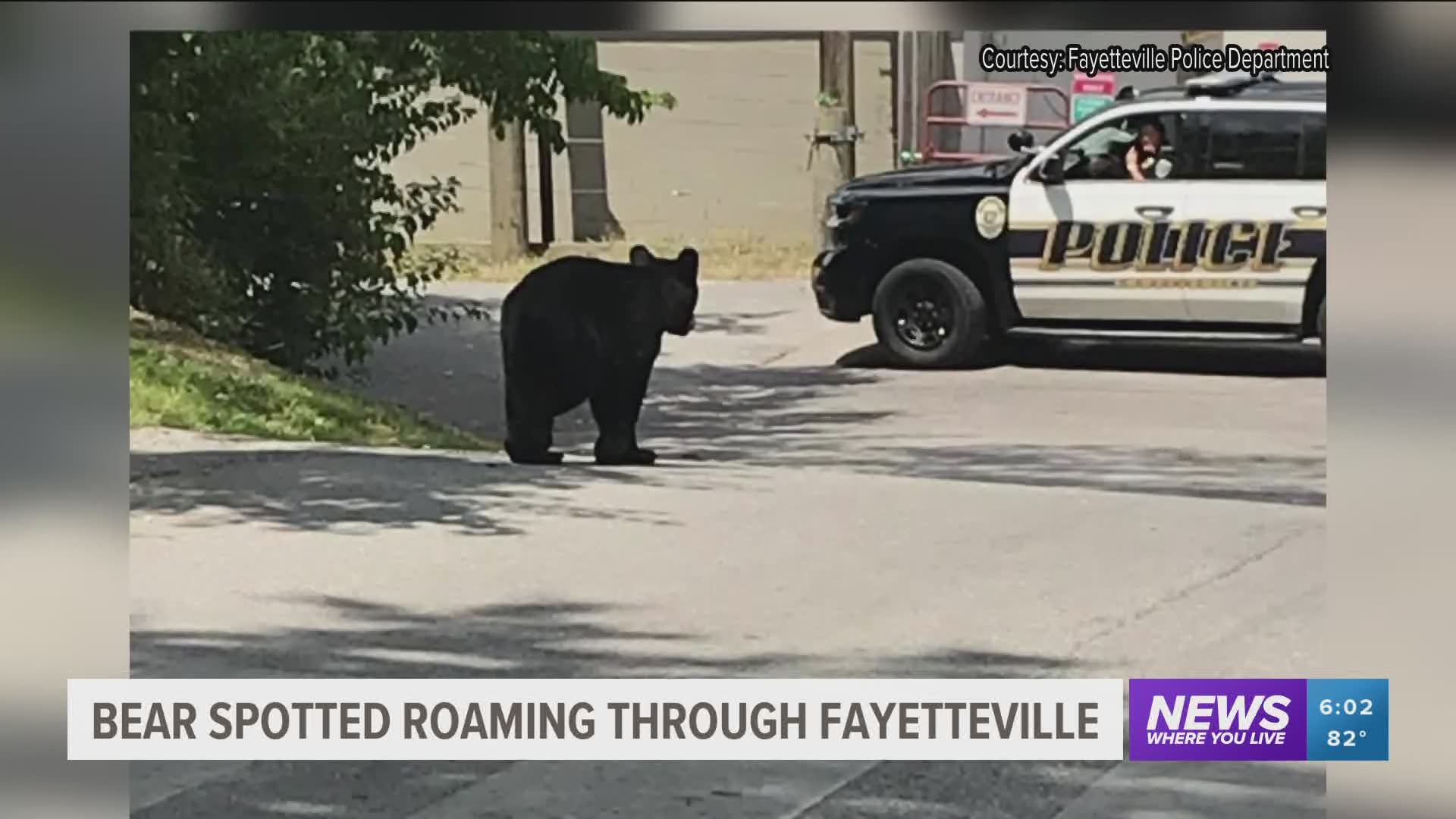FAYETTEVILLE, Ark. — Local bears seem to be getting bored with living a socially-distant lifestyle in self-isolation. Can we blame them though?
Black bears have been spotted, photographed, captured and relocated in several local cities and neighborhoods over the past few days, including Fayetteville, Alma and Ozark.
Black bears rarely become aggressive when encountered, and watching them can be a wonderful experience when done at a safe distance, but it is important to know how to react in the event of an up-close bear encounter.
Bears are intriguing creatures, often associated with the stuffed best-pals of our childhood and favorite cartoon characters, such as Winnie the Pooh.
The Fayetteville Police Department (FPD) couldn’t resist adding a little humor when posting an update to Facebook regarding a bear that was spotted at multiple Fayetteville locations on July 22.
“Fayetteville PD came across Yogi hunting for picnic baskets. While attempting to direct this bear out of town, it got away in the area of West & Spring,” FPD shared.
Fayetteville Police and animal services were eventually successful in safely rescuing the bear on Wednesday.

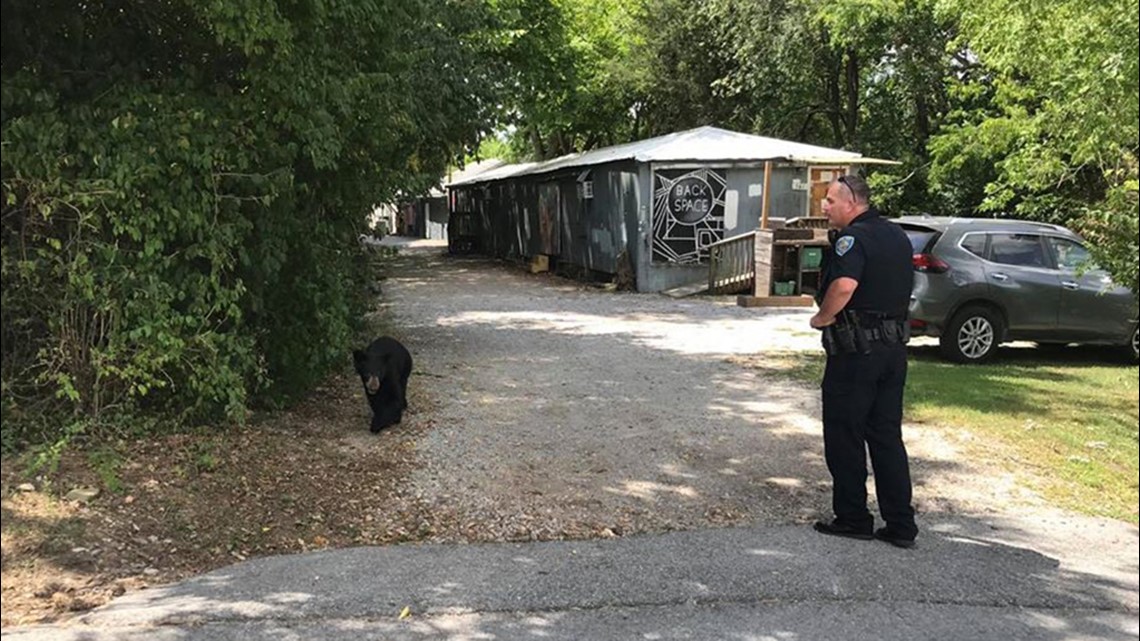
Humor and adoration for the cuddly fluffs aside, there have been numerous reported black bear attacks across the country over the past month and it is important to inform ourselves and our children about bear-safety.
Jaime Sajecki, a black bear project leader with the Virginia Department of Game and Inland. Fisheries says, “Know what to do when you see a bear. NEVER run from a bear. Don’t approach a bear. Just quietly move away and leave the area. However, if a bear does approach you, make yourself look big, make loud noises, clap your hands, and continue to back away.”
On July 14, Dennis Shores, Patrol Sergeant for the Alma Police department, managed to run a bear up a tree using the ‘big and loud’ technique, which bought police time as they waited for an NWA Game and Fish Bear Biologist to arrive with assistance.
While normally the ‘big and loud’ reaction is only advised if a bear is approaching you, this particular bear had been on the run in Alma for a month or so, had successfully evaded Alma Police’s rescue attempts, and had made his way into the backyard of a heavily populated neighborhood in Alma.
A bear was also seen roaming around Ozark on Wednesday (July 22). Ozark Police released a photo of a small bear in a tree. Game and Fish tranquilized the bear and safely released it.

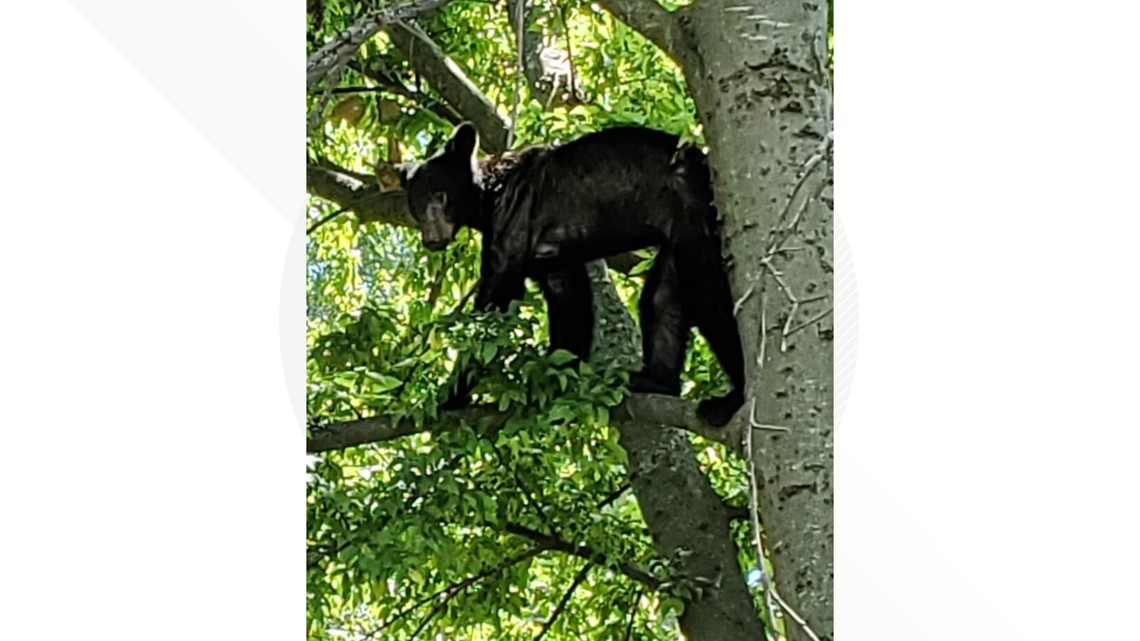
Barbara Simco Harris used the 'Near Me' feature on the 5News app to share a photo of a bear in her yard Thursday (July 23). She wrote, "I live on Devil's Den Road near Winslow. I came home from town yesterday, and this Bear was in my yard."

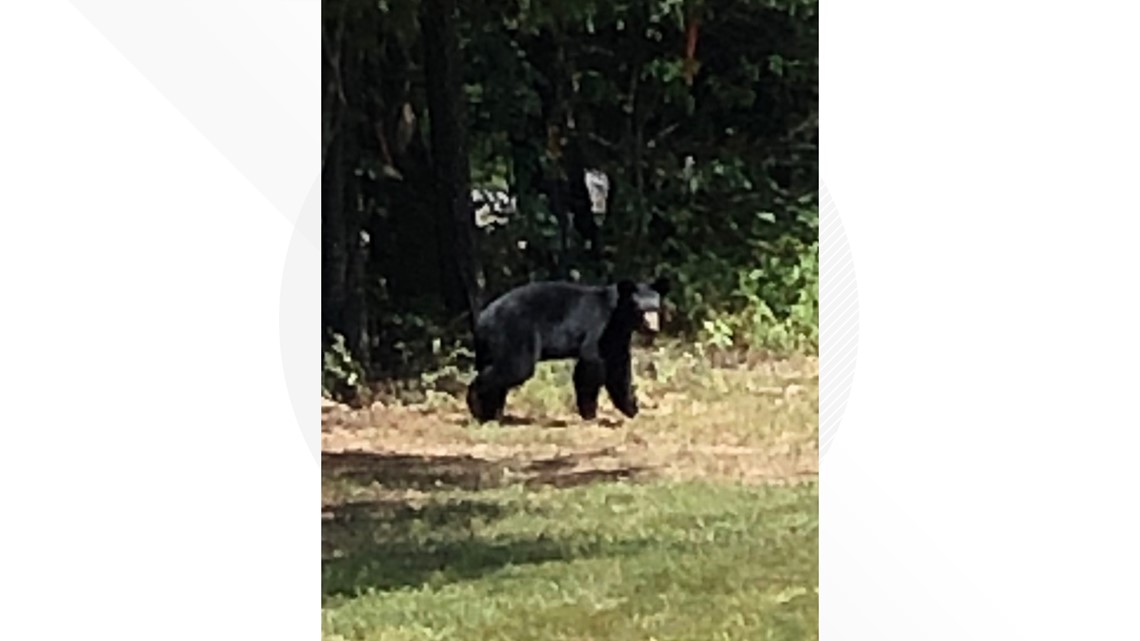
BearWise is a black bear program that offers communities solutions that help prevent problems with bears as well as safety tips for different scenarios.
Bears must find food to eat, water to drink, safe places to sleep including winter dens, survive fierce weather and raise their young. They need plenty of space to live and to find their own healthy, natural foods.
BearWise shared the following tips on how to respond in the event of a bear encounter.
In a building, by a dumpster or around the corner:
- Give the bear a clear escape route (do not corner it).
- Leave any doors open as you back away from the bear.
- Do not lock the bear in a room.
In your backyard:
- From a safe distance, make loud noises, shout, or bang pots and pans together to scare away the bear.
- When the bear leaves, remove potential attractants such as garbage, birdseed or pet food.
- Ask neighbors to remove attractants.
- Check your yard for bears before letting out your dog.
In the woods:
- If you see a bear before it notices you, stand still, don’t approach and enjoy the moment. Then move away quietly in the opposite direction.
- If you encounter a bear that’s aware of you, don’t run. Running may trigger a chase response. Back away slowly in the opposite direction and wait for the bear to leave.
If the bear approaches, follows or charges you, keep reading the sections below.
If a black bear becomes aggressive and approaches you:
- Stand your ground.
- Back away only when the bear stops its approach.
- Make yourself look bigger by raising your arms and jacket, and/or standing on a rock or stump.
- Yell “Hey bear” loudly.
- Get your bear spray out of the holster and into your hand. Remove the safety latch.
If a black bear becomes aggressive and follows you:
- Stand your ground.
- Try to appear large by holding up your arms and jacket, and/or standing on a rock or stump.
- Back away only when the bear stops its approach.
- Intimidate the black bear by making yourself look bigger and making noise (wave arms, shout, clap, bang stick).
- Stay together.
If the black bear continues to follow you:
- Stand your ground and stay together.
- Intimidate the black bear by making yourself look bigger and making noise (wave arms, shout, clap, bang stick).
- Prepare to fight or use bear spray.
If the black bear charges you:
- Stand your ground.
- Remain calm.
- If you have bear spray, spray it directly at the bear.
- If the black bear makes contact with you
- FIGHT BACK with anything at hand (knife, sticks, rocks, binoculars, backpack or by kicking).
- DO NOT play dead.
WATCH: Wildlife biologist, Kim Delozier, illustrates best practices for encountering bears in the video “Day Hiking & Wildlife.”
Black bears are very smart and can identify food not only by smell but also by appearance.
Storing food and disposing of garbage properly can mean life or death to a bear because they learn quickly and will return to areas where they find food, which can be dangerous for both people and bears.
Colleen Olfenbuttal with North Carolina Wildlife Resources Commission says, “Coexisting with black bears often means keeping them from getting food and garbage from around your home, business, and farms.”
Defenders of Wildlife is a leading advocate for black bear recovery and says habitat loss, being hit by cars and conflict with humans are all threats to black bears.
BearWise offers the following tips for keeping bears out of homes and businesses.
Buy bear-resistant trash containers:
- BearWise offers a list of secure container brands and vendors available for purchase.
- Make a DIY Container with materials bought at local hardware stores. The following flyers offer several DIY methods.
- Modify your trashcan to resist black bears
- How to modify a dumpster to make it more bear-resistant
Bear-resistant barriers:
- Buy or build a trash enclosure.
- Install electric fencing.
There are precautions that can be taken while hiking, camping or fishing.
“I notice that after the hikers depart, the wildlife comes out, and the first place the animals go every time is the fire ring because hikers have half attempted to burn their food and trash or spit their mint-flavored toothpaste into these pits," said Chloë de Camara, Appalachian Trail Ridge Runner. "The hikers move forward, but places remain immobile, animals become acclimated, and the next round of hikers pay the consequences.”
BearWise shared this list of precautions to take when hiking, camping and fishing:
When hiking or walking:
- Be aware of your surroundings.
- Hike in groups and stay together.
- Keep kids within sight.
- Keep dogs on a leash or leave them home.
- Make noise in thick cover.
- Carry bear spray.
- meeting a bear on the trail
If your dog is with you:
- Keep dogs leashed.
- Do not let dogs chase or interact with bears.
- If you encounter a bear while with your dog, back away and leave the area.
When camping:
- Do not store food in your tent.
- Cook 100 yards from your tent.
- Clean cooking area thoroughly.
- Don’t sleep in the clothes you wore when cooking.
- Store food, trash, lotions, toothpaste, and deodorant in a hardtop vehicle with windows closed and doors locked OR a bear-resistant container OR suspended in a tree 100 yards from sleeping area.
WATCH: What to do in a Bear Encounter (And How to Avoid One)
Black Bear Facts
- The American black bear is the smallest of the three species of bear found in North America and has an average life span of 15 to 25 years.
- In the Southeast, black bears are mostly black and often have a brown snout, but their fur can also be shades of brown, cinnamon or blond.
- Black bears are quick and agile and can sprint up to 35 miles-per-hour and climb 100 feet up a tree within 30 seconds.
- Black bears are about three feet tall at the shoulder and five to seven feet tall when standing upright. Male black bears typically weigh between 130 and 500 pounds, while smaller females weigh 90 to 350 pounds.

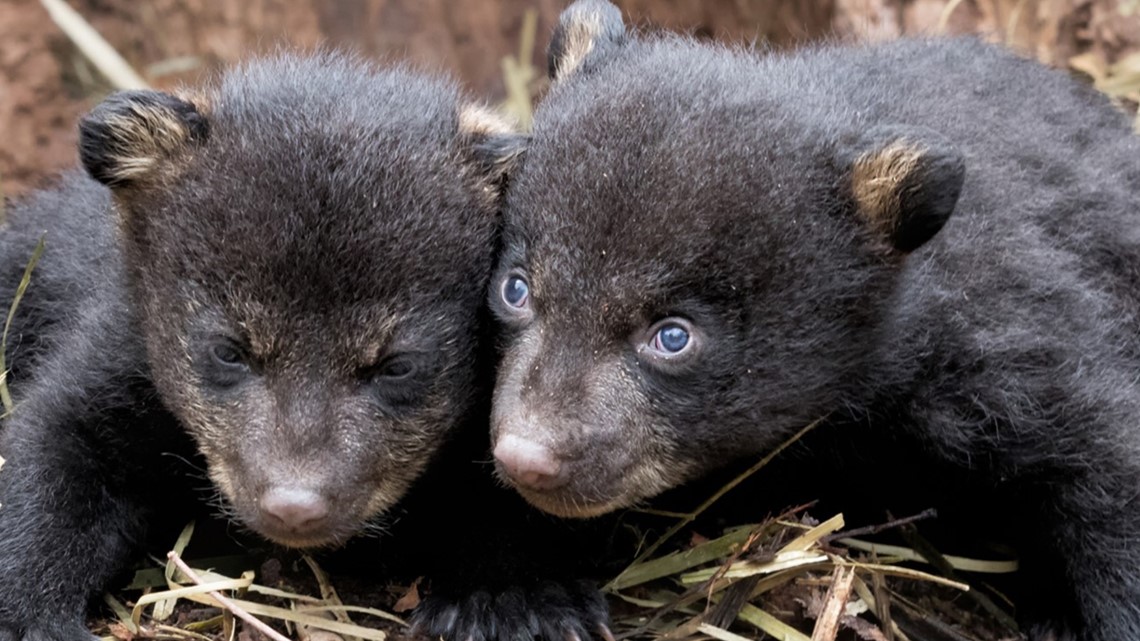
Black Bear Myths
Myth: A mother black bear with cubs is always dangerous.
It’s rare for mother black bears to attack a person in defense of cubs because her cubs can climb trees when they feel threatened. When they are up in a tree she knows they are safe.
Your best action is to be calm and give her plenty of room, even if it means you have to change your planned hike or other activity. Never keep approaching her, even if the cubs are in a tree.
Myth: Black bear attacks are common.
Black bear attacks are extremely rare. Most bears will retreat before you are even aware of their presence. That said, always stay alert in bear country and know the best ways to avoid problem encounters.
Fortunately, there have been no injuries associated with the recent rise in bear sightings here in Northwest Arkansas. However, the Associated Press has written numerous stories about bear encounters that have ended badly in other areas of the country.
The following is a list of AP headlines for bear-related stories in July. Click on the links to read the full stories.

